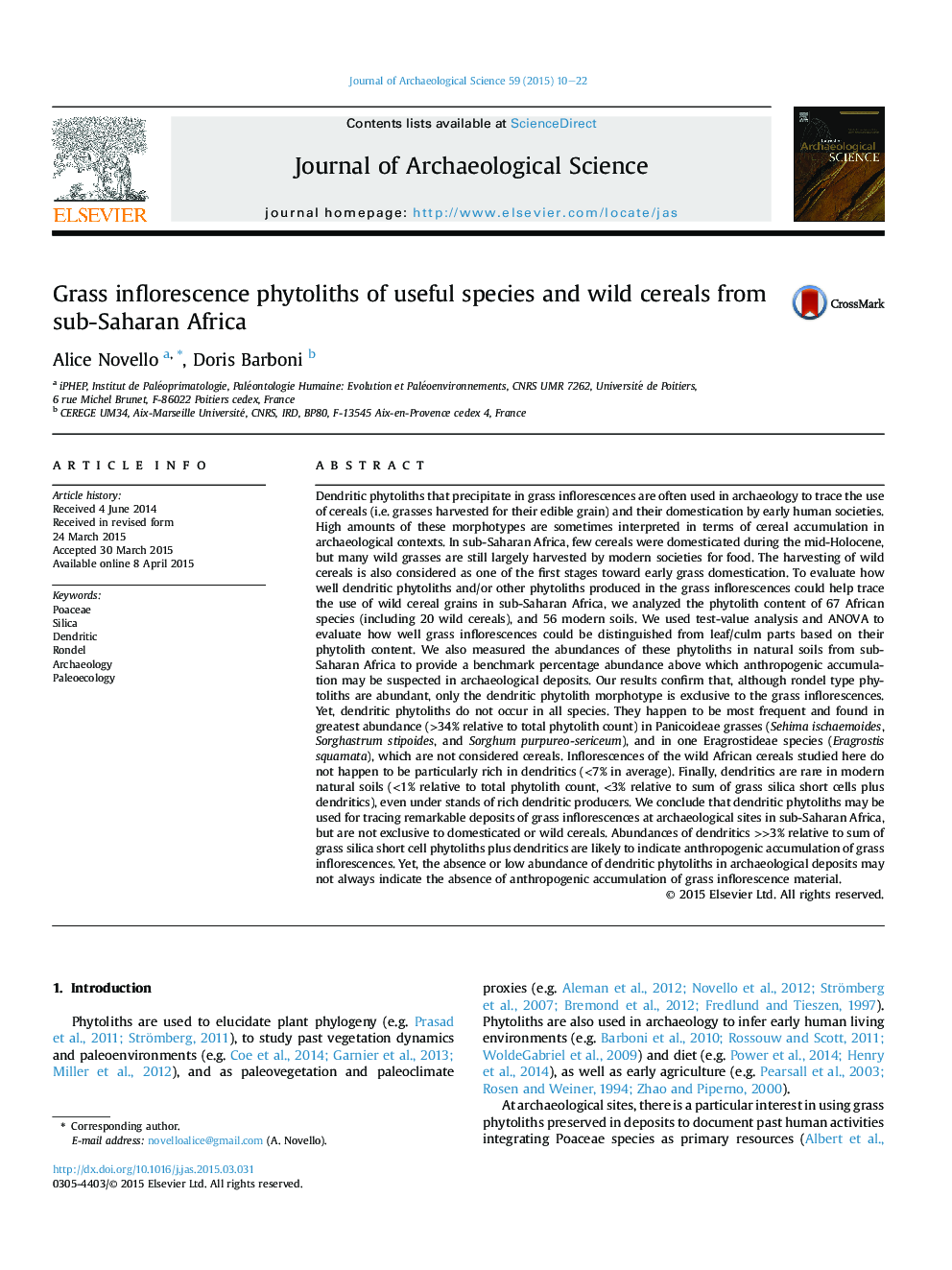| کد مقاله | کد نشریه | سال انتشار | مقاله انگلیسی | نسخه تمام متن |
|---|---|---|---|---|
| 1035353 | 1483901 | 2015 | 13 صفحه PDF | دانلود رایگان |
• Commonly grass leaves and inflorescences exhibit similar suites of phytoliths.
• But truncated-top conical rondels are more abundant in inflorescences than in leaves.
• Dendritics are exclusive to grass inflorescences.
• In modern non-cultivated soils, dendritics account for <3% of the grass phytoliths.
• >>3% of dendritics in past deposits may be related to anthropogenic activities.
Dendritic phytoliths that precipitate in grass inflorescences are often used in archaeology to trace the use of cereals (i.e. grasses harvested for their edible grain) and their domestication by early human societies. High amounts of these morphotypes are sometimes interpreted in terms of cereal accumulation in archaeological contexts. In sub-Saharan Africa, few cereals were domesticated during the mid-Holocene, but many wild grasses are still largely harvested by modern societies for food. The harvesting of wild cereals is also considered as one of the first stages toward early grass domestication. To evaluate how well dendritic phytoliths and/or other phytoliths produced in the grass inflorescences could help trace the use of wild cereal grains in sub-Saharan Africa, we analyzed the phytolith content of 67 African species (including 20 wild cereals), and 56 modern soils. We used test-value analysis and ANOVA to evaluate how well grass inflorescences could be distinguished from leaf/culm parts based on their phytolith content. We also measured the abundances of these phytoliths in natural soils from sub-Saharan Africa to provide a benchmark percentage abundance above which anthropogenic accumulation may be suspected in archaeological deposits. Our results confirm that, although rondel type phytoliths are abundant, only the dendritic phytolith morphotype is exclusive to the grass inflorescences. Yet, dendritic phytoliths do not occur in all species. They happen to be most frequent and found in greatest abundance (>34% relative to total phytolith count) in Panicoideae grasses (Sehima ischaemoides, Sorghastrum stipoides, and Sorghum purpureo-sericeum), and in one Eragrostideae species (Eragrostis squamata), which are not considered cereals. Inflorescences of the wild African cereals studied here do not happen to be particularly rich in dendritics (<7% in average). Finally, dendritics are rare in modern natural soils (<1% relative to total phytolith count, <3% relative to sum of grass silica short cells plus dendritics), even under stands of rich dendritic producers. We conclude that dendritic phytoliths may be used for tracing remarkable deposits of grass inflorescences at archaeological sites in sub-Saharan Africa, but are not exclusive to domesticated or wild cereals. Abundances of dendritics >>3% relative to sum of grass silica short cell phytoliths plus dendritics are likely to indicate anthropogenic accumulation of grass inflorescences. Yet, the absence or low abundance of dendritic phytoliths in archaeological deposits may not always indicate the absence of anthropogenic accumulation of grass inflorescence material.
Journal: Journal of Archaeological Science - Volume 59, July 2015, Pages 10–22
